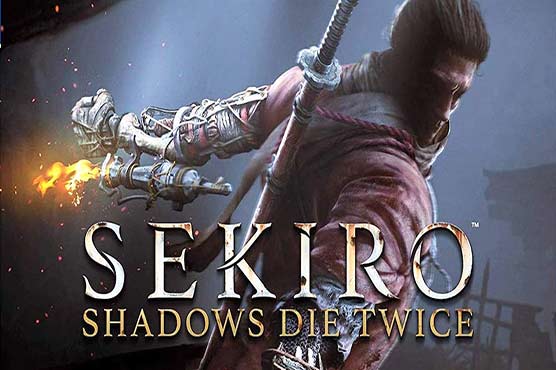Sekiro: Shadows Die Twice is flagellant ninja mastery

The basic structure of the game is where the similarities to Dark Souls are most apparent.
(Web Desk) - FromSoftware launched another blood boiling Shinobi-focused adventure from the DNA of the Souls and Bloodborne series known as Sekiro: Shadows Die Twice.
Sekiro: Shadows Die Twice makes you meet with several swift, bloody deaths in a matter of minutes. This is a brutal, brutal game that makes no apologies whatsoever for grinding your resolve into dust.
Sekiro is the new game from Dark Souls studio From Software and its renowned director Hidetaka Miyazaki. Comparing games to Dark Souls is a well-trodden cliché at this point, and while there’s more reason to do so with Sekiro than most, it’s the differences that make it interesting. A fantastical take on Japan’s ninja mythology, Sekiro is much more of a straightforward action game than the Souls series, giving you a predefined character, storyline, and set of tools. There’s no multiplayer element, and you can even pause.
The actual combat system is an even greater departure. Where Dark Souls emphasizes patience and defense, Sekiro is all about aggression. As well as a mostly traditional health bar called “vitality,” both you and your enemies have a secondary meter called “posture” that depletes upon blocking an attack or having your own deflected. Foes become vulnerable to killing blows when either bar is at zero, but posture usually runs out first; this makes for thrilling, intense combat that rewards you for taking risks and going on the offensive.
The basic structure of the game is where the similarities to Dark Souls are most apparent. You’re still progressing through an unfamiliar land with little guidance, suffering a heavy penalty when you die and resurrect at a checkpoint. But Sekiro’s full title refers to a twist on that mechanic that gives you a chance for instant revival after dying. If this sounds like a crutch, it is not . You will die so much that the ability to die twice in the same life actually feels stingy.
Sekiro’s level design is intricate, beautiful, and above all vertical in a way that From Software games have never been before. Aided by a grappling hook, you’re able to jump around stages with incredible fluidity. Recalling FromSoftware’s PlayStation-era Tenchu series of ninja games, it’s possible to focus on a stealthy play style with Sekiro though this is no less forgiving. You can jump off a roof to kill a soldier instantly, yes, but don’t think anyone in the area won’t notice.
But FromSoftware knows that players will persevere. It helps that with Sekiro, the studio has created not only a phenomenal combat system, but an evocative and atmospheric setting that you’ll want to learn more about. The visual design, in particular the color palette, is gorgeous and otherworldly, even if the game doesn’t break new technical ground. And Sekiro himself makes for a compelling protagonist whose story, a one-armed shinobi upgrading his physical form in an effort to save his master, is woven into the very fabric of the game itself.
The difficulty will be off-putting to many people, but for many others it’s part of the draw. If you’ve ever yelled at a TV screen before pressing “retry” with determination, Sekiro: Shadows Die Twice is for you.


